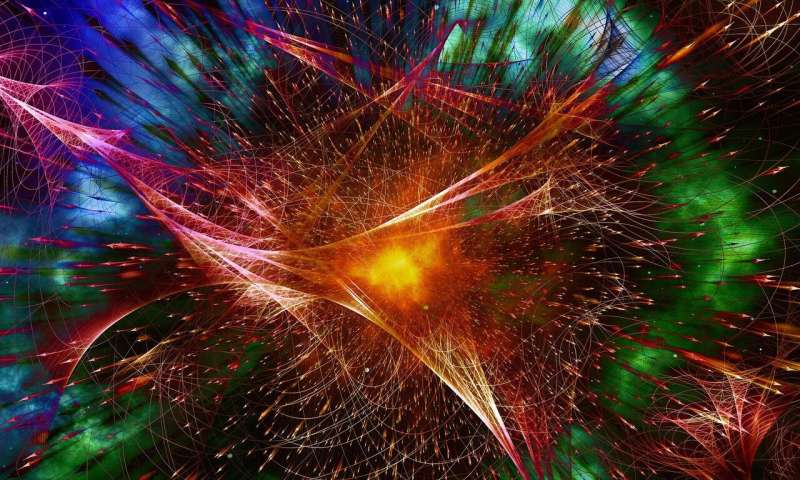Credit: Pixabay/CC0 Public Domain
Quantum sensors can measure extremely small changes in an environment by taking advantage of quantum phenomena like entanglement, where entangled particles can affect each other, even when separated by great distances.
Researchers ultimately hope to create and use these sensors to detect and diagnose disease, predict volcanic eruptions and earthquakes, or explore underground without digging.
In pursuit of that goal, theoretical researchers at the Pritzker School of Molecular Engineering (PME) at the University of Chicago have found a way to make quantum sensors exponentially more sensitive.
By harnessing a unique physics phenomenon, the researchers have calculated a way to develop a sensor that has a sensitivity that increases exponentially as it grows, without using more energy. The results were published October 23 in Nature Communications.
"This could even help improve classical sensors," said Prof. Aashish Clerk, co-author of the paper. "It's a way to build more efficient, powerful sensors for all kinds of applications."
Harnessing physics phenomena
Quantum sensors use atoms and photons as measurement probes by manipulating their quantum state. Increasing the sensitivity of these sensors—and traditional sensors—often means developing a bigger sensor or using more sensing particles. Even so, such moves only increase the sensitivity of quantum sensors equal to the number of particles that are added.
But the researchers, led by graduate student Alexander McDonald, wondered if there was a way to increase the sensitivity even more. They imagined creating a string of photonic cavities, where photons can be transported to adjacent cavities. Such a string could be used as a quantum sensor, but the researchers wanted to know: If they created a longer and longer chain of cavities, would the sensitivity of the sensor be greater?
In systems like this, photons could dissipate—leak out of the cavities and disappear. But by harnessing a physics phenomenon called non-Hermitian dynamics, where dissipation leads to interesting consequences, the researchers were able to calculate that a string of these cavities would increase the sensitivity of the sensor much more than the number of cavities added. In fact, it would increase the sensitivity exponentially in system size.
Not only that, it would do so without using any extra energy and without increasing the inevitable noise from quantum fluctuations. That would be a huge win for quantum sensors, Clerk said.
"This is the first example of a scheme like this—that by stringing these cavities together in the right way, we can gain an enormous amount of sensitivity," Clerk said.
Improving all kinds of quantum sensors
To prove the theory, Clerk is working with a group of researchers who are building a network of superconducting circuits. These circuits could move photons between cavities in the same manner Clerk described in the research paper. That could create a sensor that could improve how quantum information is read out from quantum bits, or qubits.
Clerk also hopes to examine how to construct analogous quantum sensing platforms by coupling spins instead of photonic cavities, with possible implementations based on arrays of quantum bits.
"We want to know if we can use this physics to improve all kinds of quantum sensors," Clerk said.
More information: Alexander McDonald et al, Exponentially-enhanced quantum sensing with non-Hermitian lattice dynamics, Nature Communications (2020). DOI: 10.1038/s41467-020-19090-4
Journal information: Nature Communications
Provided by University of Chicago
























